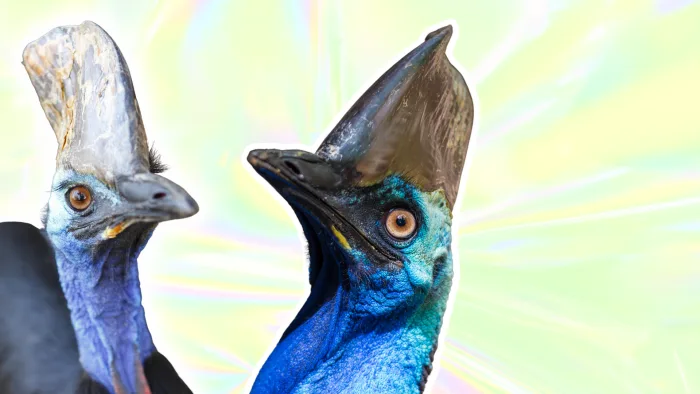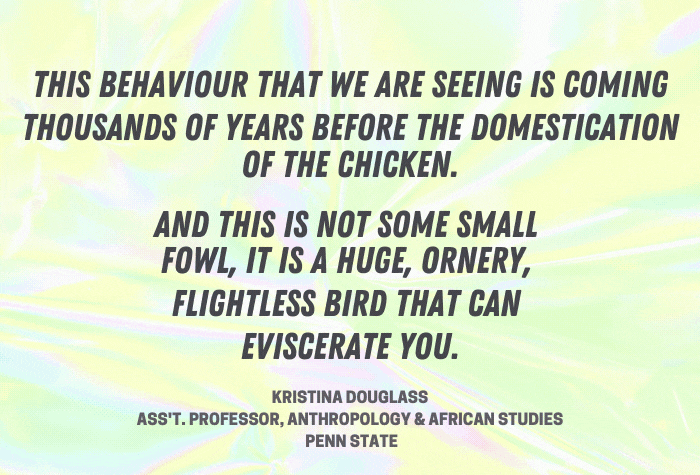
Thousands of years ago, humans raised these giant, murderous birds
It's often referred to as the world's most dangerous bird: The cassowary.
Reaching heights of 1.5 metres and weighing up to 76 kilograms, cassowaries are equipped with dagger-like claws measuring up to 10 centimetres, and they aren't afraid to use them.
Back in April 2019, a cassowary made headlines after killing its owner in Madison, Florida.
According to the San Diego Zoo, “the cassowary can slice open any predator or potential threat with a single swift kick.”
But all of that wasn't enough to steer people, according to a new study in the Proceedings of the National Academy of Sciences.
The paper finds that between 6,000 and 18,000 years ago, people in New Guinea hatched and raised cassowaries, possibly making them the first bird managed by humans.
Analysis of ancient cassowary shells suggests humans were using the birds like chickens - harvesting some of their eggs to eat them. This possible domestication comes years before the chicken made an appearance on farms some 9,500 years ago.

Graphic created by Cheryl Santa Maria. Cassowary images: Getty.
The research suggests cassowaries may "represent the earliest indication of human management of the breeding of an avian taxon anywhere in the world, preceding the early domestication of chicken and geese by several millennia," the study's authors say.
But cassowaries certainly aren't chickens. In fact, they have more in common with velociraptors than your average modern domesticated bird. But upon hatching cassowaries imprint onto humans easily, making them relatively easy to raise to adult size. If a cassowary chick sees a human first thing upon hatching, it will follow it around, thinking the human is its mother.
Researchers didn't find any evidence the ancient cassowaries were kept in pens, but they plan to look for that in future studies.
Cassowaries are flightless, but they are skilled swimmers, native to tropical forests in New Guinea, Indonesia, and parts of Australia. Cassowaries chicks are still traded in New Guinea.






